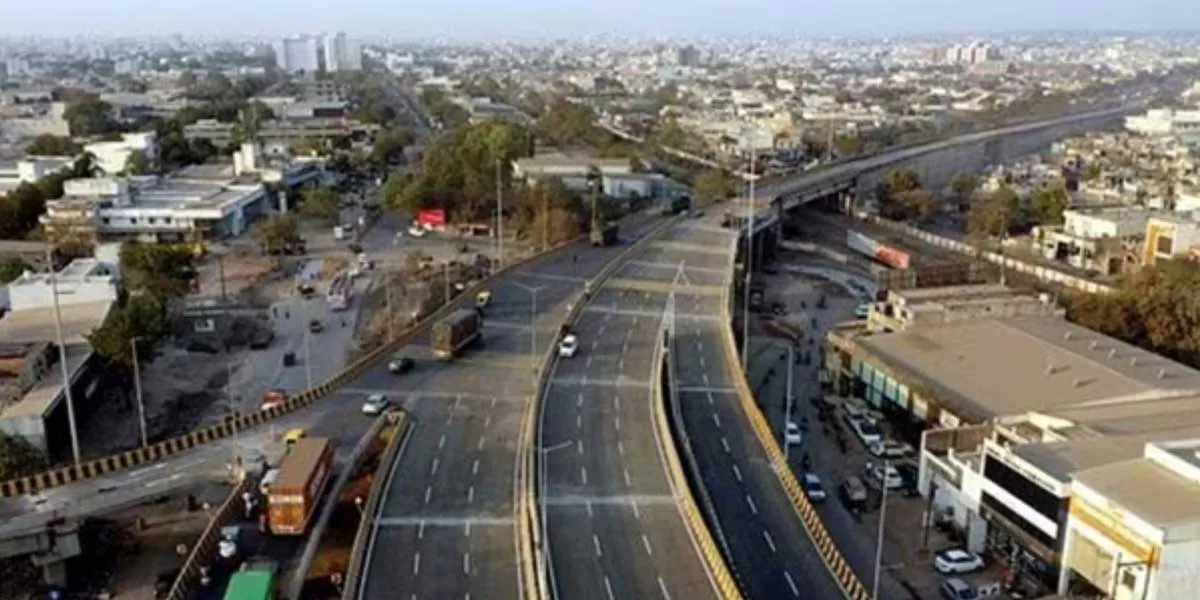CW DESIGN BUILD explores what it would take for a developer to get into the business, and the prospects therein.A recent Colliers India investment report solicited responses from the top 40 institutional investors in the country to understand their investment priorities in 2019. Interestingly, 63 per cent of the investors ranked data centres as the most attractive emerging asset class. Ritesh Sachdev, Head, Occupier Services, India, and Managing Director, South, Colliers International India, attributes this to “the Indian Government emphasising on the creation of a Cloud warehouse, with a focus on keeping data within India.“Interest in the Cloud is growing on the back of the government’s thrust towards Digital India and the ever-increasing need for business innovation and agility, to scale fast in a competitive market,” affirms K Ashwin Kumar, Director, Linode Data Centre Operations India. He sees India’s 42.5 million SMEs/MMEs, the banking, financial services and insurance and healthcare sectors and government departments as key consumers of cloud services.Data centres have been around in India for some time now, but it is only now that a large number of global data centre providers, private equity players, real-estate consultants and developers have realised the value of getting into the game, observes Praveen Nair, Sales Director, Bridge Data Centres. Nair attributes this interest to the emphasis on Digital India, the explosion in the usage of data services and the need for more scalable infrastructure with higher operating availability to enable online digital business.As a result of all this activity, “data centres have been growing at 72 per cent,” says Dr Niranjan Hiranandani, Founder & Managing Director, Hiranandani Group. “We expect Digital India, Make in India and the push for data localisation to spur 100 per cent compound annual growth over the next five years.”Development diversificationWhile data centres are increasingly being seen as an emerging hot real-estate opportunity, merely having sufficient land on which to develop a data centre would not be enough for developers to get into the business. They will need to evaluate whether they have the skills and resources to efficiently design a data centre.One of the primary ways in which a data centre differs from a regular commercial building is in its cooling requirements. On average, Prasanna Sarambale, CEO, Data Centre Business & Group Head, Business Development, Sterling and Wilson, estimates the cooling requirement of a data centre to be more than 10 times that of a conventional commercial space. “Typically, 15-20 sq m of commercial office space needs 1 tr of cooling whereas for a similar footprint, a data centre could need more than 10 tr, though this will vary according to the type of data centre, peaking in the case of a Cloud data centre as against a colocation data centre,” he explains. As a thumb rule, Sarambale estimates that for a colocation building, the capital expenditure for 1 tr of implementation could be around Rs.2-2.5 lakh whereas for a commercial building it could be Rs.0.5-0.75 lakh.However, this comparison is overly simplistic because the data centre needs to be designed for operation 24 × 365. Essentially, it is not only the HVAC load that needs to be factored into the building design – the HVAC system also needs to be made resilient against failure. This involves incorporating fault tolerance into the infrastructure design depending on the class of the data centre, whether Tier-III/Level 3 or Tier-IV/Level 4, by adopting a dual distribution path and extra standby equipment (redundancy), says Sarambale. Provision is also required for maintenance such that the entire system is not required to be shut down at one time – conceptually this involves “concurrent maintainability,” he adds. “All these requirements impact building design in terms of space, the number of shafts, the building design load.” So, a high availability data centre for enterprise class, colocation and Cloud should ideally be “purpose-built”.“A Tier-III or Tier-IV data centre would need the building to be designed specifically for data centre operations,” explains Sarambale. “It is not possible to accommodate a high availability data centre in a readymade building because of the large area required. Also, the height of the space (floor to ceiling) should be a minimum of 5 m, which is higher than most commercial buildings. Even the floor loading requirement of a data centre is high, in the range of 1,500 kg per sq m whereas commercial buildings are designed for a maximum of 500 kg per sq m.”For the highest efficiency, Sarambale recommends employing the MEP consultant at the project inception stage and completing the MEP design even before the civil design starts. He also suggests making thermal storage a part of the design in case of high rack load, to maintain continuous cooling during grid failure and before emergency generators kick in.Design + build + operateThe next big question for developers with the necessary skills to build data centres: Should they additionally take on data centre operations or simply stick to data centre development for a third party (provider)?For instance, “the Hiranandani Group acquired significant data centre construction experience in building data centres for NTT,” says Hiranandani. And now, the group has forayed into data centre parks with a new business venture, Yotta Infrastructure, to design, build and operate 11 large-scale, hyper-density, Uptime Institute-certified Tier-4 data centres in Panvel, Chennai and Mumbai. To plug the gap in its data centre operational skills, the group has brought in Sunil Gupta as Managing Partner and Chief Executive Officer. “Gupta is known as India’s data centre man with 27 years’ experience in data and a proven track record of building 15+ hyperscale, hyper-density data centres,” adds Hiranandani.That is not all. “Importantly, the Group has in-house power resources, which are critical as power accounts for 30 per cent of the operational cost of a data centre,” says Hiranandani. “Cost efficiencies are critical to achieve our aim of making Yotta the provider of the cheapest data storage infrastructure per GB in the world.”TUCO, a Hiranandani Group power distribution business, shall provide competitive and reliable power supply to the Yotta Data Centre Park at Panvel. Another group entity, H-Energy, in the oil and gas vertical, will be leveraged for gas as the energy source for the self-generation of power. The group is also building a captive 40-MW solar power plant that will power the first data centre in Panvel.Potential clientsThe target clientele for developers such as the Hiranandani Group who have decided to build and operate data centres would be Cloud service providers who would prefer to use the services of an existing data centre, rather than get their own built.“We prefer to host our operations in Tier-III or Tier-IV TIA and ISO-certified data centres in cities like Mumbai, which have a great potential for emerging business,” says Kumar. “Moving into an existing facility with our servers, network gear and other hardware is faster and comparatively inexpensive. Also, it is easier to expand to a new data centre location as the market evolves.”According to Kumar, data centres providers in areas such as Powai and Navi Mumbai are considerably expanding their infrastructure in a 5-15 km radius of their existing data centres.For developers that have successfully established a data centre business, there is always the possibility of selling out to an overseas provider looking at entering the country. Players such as Singapore Telemedia Technologies and NTT entered India through acquisitions. Obviously, that modus operandi gives the data centre provider immediate access to physical infrastructure and can cut short the time to operations. However, “an acquisition is subject to finding the right asset at the right price,” says Nair.Design + buildThe target clientele for companies with data centre construction expertise who are not looking at operating data centres are data centre providers who have taken a call to start a greenfield data centre.Sterling & Wilson has built data centre infrastructure, including both civil and MEP requirements, for Vodafone Chennai, NSE Chennai, NSDL e-Gov Bengaluru and Rajasthan State Data Centre, Jaipur.Several large multinational corporations such as Oracle, Airtel and Reliance India are developing data centres in India, according to the Colliers’ report.All major Cloud service providers, Microsoft, IBM, Google, Amazon Web Services and Alibaba, are present in India. And leading data centre providers such as Netmagic Solutions, GPX Global Systems and CtrlS have been investing in the country. Another entrant, Bridge Data Centres, is developing a 30-MW data centre delivering an 18-MW IT load in Navi Mumbai on land acquired for the purpose, shares Nair. Its internal engineering and design team worked with experts to put together the design, a ground plus four-storey building spread over 350,000 sq ft.Answering the question why Bridge Data Centres could not have bought an existing building for the purpose, Nair says, “We want to give our customers services equivalent to what they could get in developed markets, such as North America or Europe, both in terms of the physical infrastructure we offer and customer-centricity. It would not have been possible to achieve a somewhat future-proof, scalable design, featuring global best practices from the data centre industry, by renovating an existing building.” Bridge Data Centres has appointed Sterling & Wilson to oversee the construction of its data centre. Closely related to construction are data centre certification and maintenance services. Sterling & Wilson is a partner of the Uptime Institute in the Indian subcontinent, the IT industry’s trusted and adopted global standard for the proper design, build and operation of data centres and, as such, offers specialised services related to data centre certification and audit. “We also offer maintenance of data centre infrastructure,” adds Sarambale.Hot LocationsWith some states like Maharashtra putting in place a Cloud policy, Ritesh Sachdev, Head, Occupier Services, India, and Managing Director, South, Colliers International India, advises occupiers to scout for data centre opportunities in Pune and Navi Mumbai, apart from IT centres like Bengaluru and Hyderabad.“Mumbai and Chennai are the preferred location choices for most data providers for being the submarine data cable landing spots on the Indian west coast and east coast respectively,” explains Dr Niranjan Hiranandani, Founder & Managing Director, Hiranandani Group. The group has allocated 50 acre from its land bank for this development, which is near the major international fibre landing stations.In 2017, we announced that we would be investing $0.5 billion in India, starting in Mumbai, says Praveen Nair, Sales Director, Bridge Data Centres. “After this data centre is made operational by Q2 2020, we will consider whether to follow it up with a second data centre in Mumbai or look at Bengaluru, Hyderabad or Pune.”Linode, the largest independent open cloud provider in the world, has recently opened its 10th data centre in the world in Mumbai, its first in India. “Mumbai is an optimum city to launch cloud hosting services because it is the landing zone for subsea cables on the west coast of India and is a huge data centre market and also India’s financial capital,” explains K Ashwin Kumar, Director, Linode Data Centre Operations India. “Also, we see Mumbai as a right and easy zone for doing business in India. As our business grows, Linode will look to expand to other locations in India, perhaps to cities like Bengaluru, Hyderabad and Chennai, which have good connectivity and the right infrastructure for data centre operations.”WebWerks India has six state-of-the-art data centres in India, in Mumbai, Pune and Delhi. These are ISO 9001:2015, ISO 27001:2013 and ISO 20000-1 certified as well as Uptime Institute and SAP-certified.“WebWerks India plans to invest in major metropolitan cities where there is huge demand for our services and where our experienced R&D team senses the biggest opportunity,” says Nikhil Rathi, Director, WebWerks India. “We evaluate our options before investing in a specific location.”Indeed, informed decisions are the way to go!

















